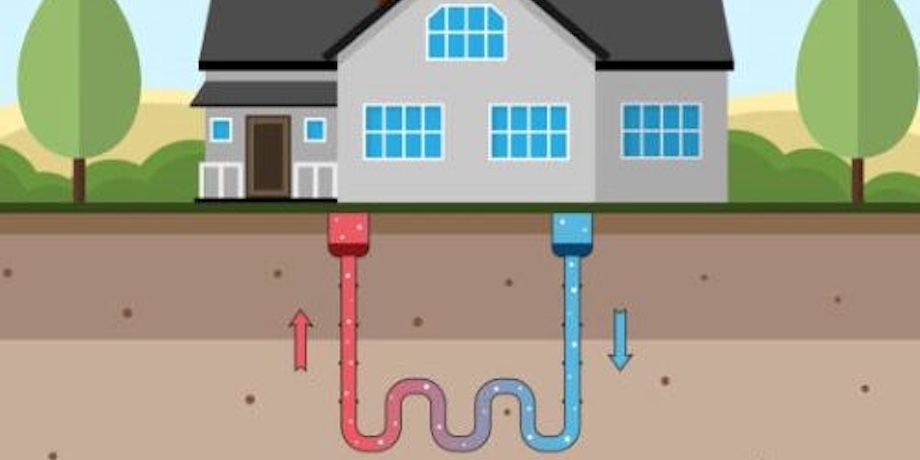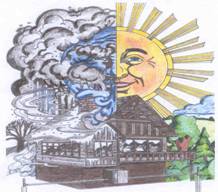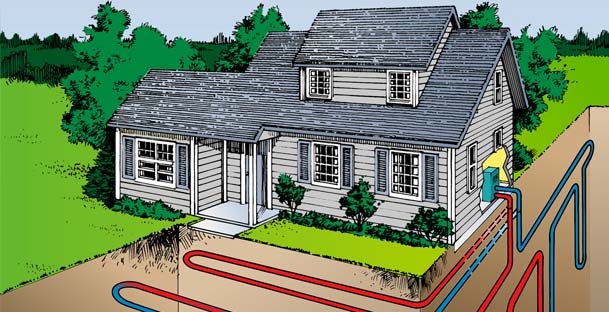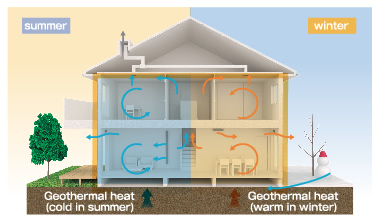Combining Geothermal Energy and Insulation for Improved Energy Efficiency

Basic Facts on Alternative Energy Sources
In the time of constant struggle with pollution and other environmental impacts of modern technology and industry, it does not come as a shock that we are willing to exploit and invest more in alternative energy sources, especially the ones nature has to offer itself. This is why it is not uncommon to see solar panels and wind turbines nowadays, not only in large industrial complexes but also smaller, privately owned residential properties, since this use of natural resources leads to improved energy efficiency and many environmental benefits. But why not dig a little deeper i.e. take things one step further and explore some other alternatives such as geothermal energy source or better yet, learn about combining geothermal energy and insulation for improved energy efficiency. What we shall discus here are the potentials and benefits of both ways to contribute to energy saving and environmental protection.

About Geothermal Energy or How to Get Heat In...
Geothermal energy is, believe it or not, not a modern and new age finding but on the contrary, it has been used even centuries ago, as one alternative way to heat buildings on one hand and generate electricity on the other. It works quite simple since it involves using natural sources of heat that can be found deep underground, in rock and fluids running under the Earth’s crust. Thus, exploitation of these natural sources usually involves serious excavation work and building up a system that is going to be able to lead the heat from the underground to the building or alternatively to the generator that is used to produce electricity. A heat pump system includes a system of pipes and ducts that will conduct the heat from the ground to the building and the other way around, it extracts the excessive heat and draws it back to the somewhat cooler ground during summertime.
Another important use of geothermal energy in the words of energy efficiency refers to generating it into electricity, which however includes a much deeper excavation in order of reaching very hot steam sources underground that are directed into turbines that are connected to electricity generators. Geothermal power plants can be found as dry steams ones where hot steam is used to drive the turbines, then flash plants where hot water from the ground is mixed with the cooler one and the produced steam is used to drive the turbines and finally, binary plants where the hot water from the ground is passed through a liquid with lower boiling point resulting it into the liquid turning into vapour and used to drive the turbines.

As for the UK potential for improving energy efficiency through geothermal energy, according to the information from the UK Government and the International Energy Agency, the predictions for 2050 is that deep geothermal heat shall meet 3,9% of projected heat demand and around 3,5% of global electricity production. Although UK does not have the geothermal potential as, for example, New Zealand, some locations could be beneficial for exploitation of geothermal energy.
Now, let’s move on to some more concrete issues in reference to geothermal potential and residential energy efficiency. The first useful advice is the one regarding the very installation of geothermal heat system. We believe that you should leave this job to a professional, since the installation requires expert knowledge on ducting metalwork, electrical work, plumbing, soil testing, serious digging, grouting and purging, adjusting thermal conductivity and much more. On the other hand, if you want to cut back on the costs, you could try to do a part of the job yourself, by acquiring necessary toolkits and renting heavy machinery and even if you get stuck, you could seek for advice from some specialized consultants with some level of expertise on the matter.
Here, it is important to take into account a few important issues. Firstly, always consider the size of the heat system which will depend on the size of your home and the temperature you want to achieve and maintain (feel free to use some of the available calculators). Secondly, you need to decide whether you want to position the pipes vertically or horizontally, which will depend on depth of the holes and the size of the land. Please note that, depending on the position of the pipes, you may also need grouting to seal the system and add anti-freeze into the pipes. Also, you need to position the trenches properly for the optimal heating and energy efficiency result. This will depend on the land and your home size, as well as the composition of the land. Finally, depending on the region your property is located in, it would be smart to stay on the safe side and consider some alternative heating source, just as you should consider combining geothermal energy with insulation for keeping the heat in.
About Insulation or How to Keep Heat In...Finally, regardless of the energy source you need, you will need proper insulation to keep the inner temperature at a steady and comfortable level during all seasons. Basically, what’s good of using natural resources and this decrease energy production and level of pollution if you have not previously ensured that the collected heat can be stored within your home, but on the contrary, is wasted through poorly insulated walls and floors.

Here, proper insulation is the best way to further upgrade your home’s energy efficiency since it will prevent thermal bridging from appearing within your home’s building structure. These thermal bridges can cause serious problems regarding energy waste and thus high energy bills which all decrease energy efficiency of any property, both residential and commercial. Properly chosen insulation material can prevent just that and have many more potential benefits found in improved moisture resistance of the structure, improved solidity, and let’s not forget, consistency with applicable UK Building regulations. We believe that once the geothermal heat system has been installed, you can first consider adding insulation to your walls, as probably the most important parts of the structure, where you can opt for some flexible insulation products, such as rock wool or some rigid insulation boards, as initially more expensive but also more efficient on the long run. Once you have completed the wall insulation project, you can move on to attic and bathroom spaces which are another source of heat loss that needs to be sealed if you expect your geothermal energy efficiency project to offer optimal results.
Insulation Shop offers a wide range of energy efficient insulation products. Send your quote enquiries to info@insulationshop.co or order directly from our insulation online shop.




























































































































